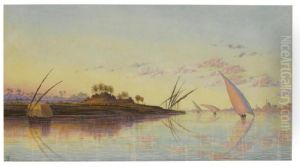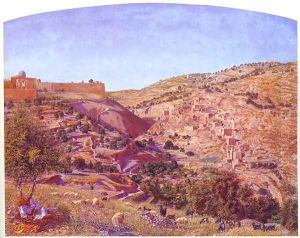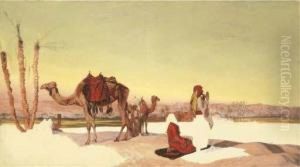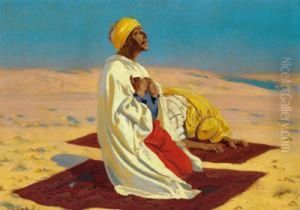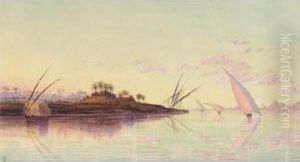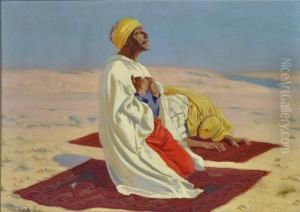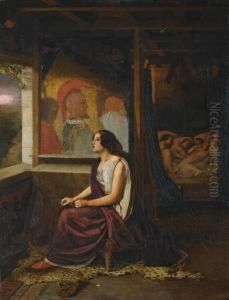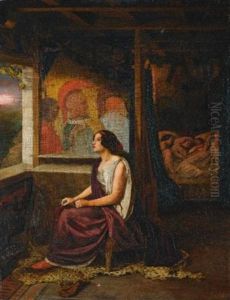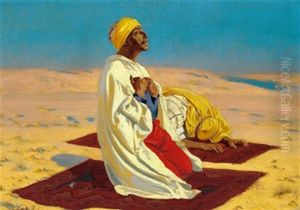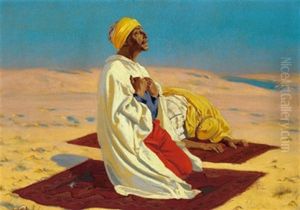Thomas B. Seddon Paintings
Thomas B. Seddon was born on August 28, 1821, in London, England. He was a British landscape painter associated with the Pre-Raphaelite Brotherhood, a group of English painters, poets, and critics, founded in 1848 by William Holman Hunt, John Everett Millais, and Dante Gabriel Rossetti. The movement aimed to reform art by rejecting what it considered the mechanistic approach first adopted by the Mannerist artists who succeeded Raphael and Michelangelo. Seddon was not a founding member but became closely associated with the group through his friendship with Holman Hunt and his adoption of their principles in his art.
His career, though short-lived due to his premature death, was marked by a commitment to the detailed study of nature, a hallmark of the Pre-Raphaelite movement. Seddon traveled extensively in the Middle East, particularly Egypt and Palestine, where he produced some of his most notable works. These travels were instrumental in developing his unique style, characterized by meticulous attention to detail and a desire to portray landscapes with historical and biblical significance with great accuracy.
One of Seddon's most celebrated works is 'Jerusalem and the Valley of Jehoshaphat from the Hill of Evil Counsel', painted in 1854-55. This painting exemplifies his dedication to portraying a landscape with as much detail and accuracy as possible. It was exhibited in 1856 at the Royal Academy, receiving critical acclaim for its precise depiction of the landscape and its luminous quality. Sadly, Seddon's career was cut short when he died of dysentery in Cairo, Egypt, on November 23, 1856, at the age of 35. Despite his brief career, Seddon's work left a lasting impact on the Pre-Raphaelite movement, and he is remembered for his contribution to the evolution of landscape painting in the 19th century.
After his death, Seddon's work continued to be celebrated and was included in exhibitions showcasing Pre-Raphaelite art. His dedication to capturing the natural world with such fidelity and his adventurous spirit in seeking out landscapes of significance beyond the British Isles have cemented his legacy as an important figure in the history of British art.
